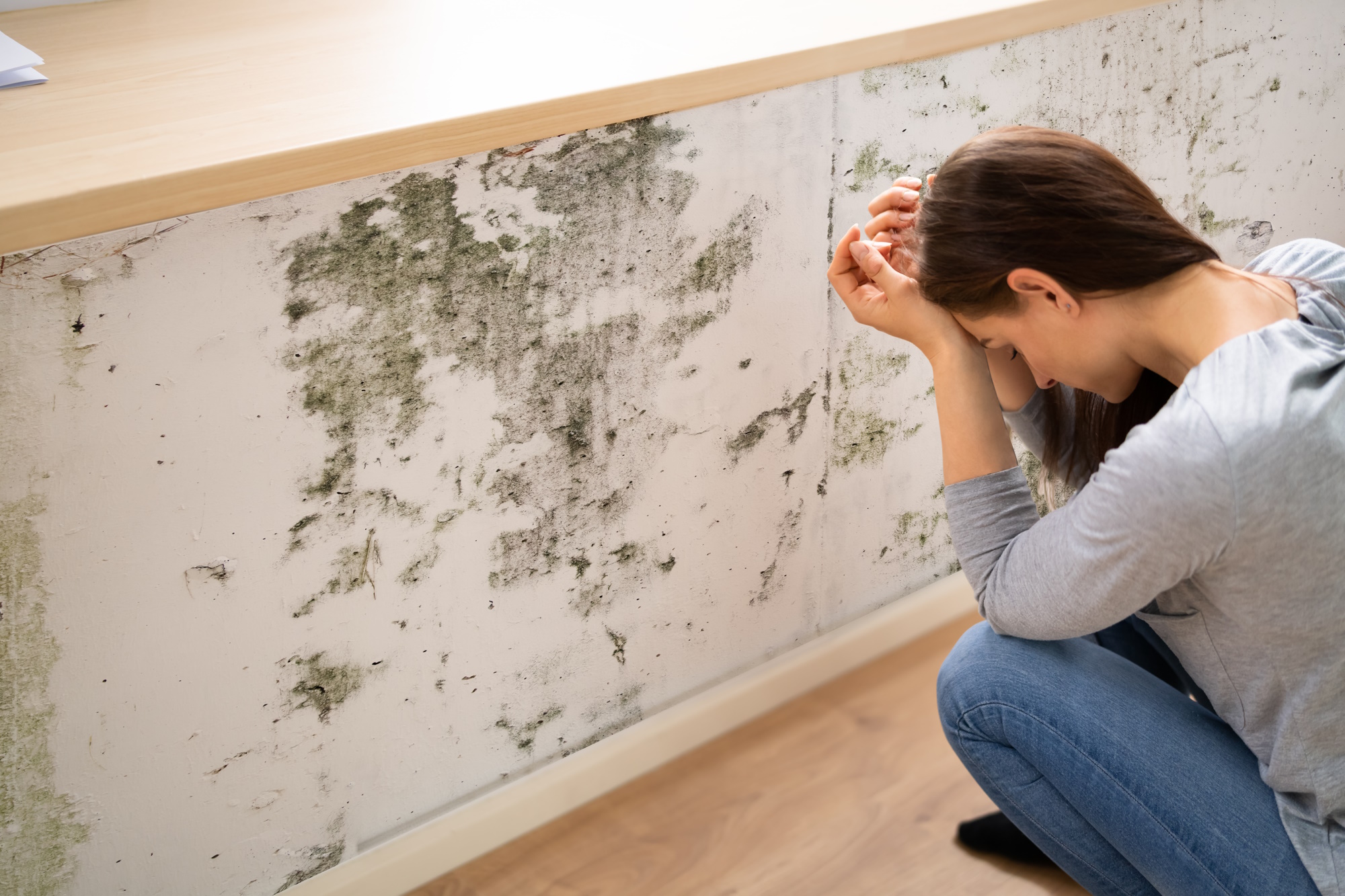Mold issues can occur for a variety of reasons, from water leaks to high humidity. All these mold problems have one thing in common however – that you don’t want it to come back.
That’s why it’s so important to address the underlying cause of a mold issue as part of a mold remediation project. Because no matter how effective the mold remediation itself is, if the conditions are right for mold to develop again in the future, it can come back.
But what causes mold, and what factors can you really control? It may surprise you, but there is hope!
What causes mold?
Since mold spores exist naturally in the environment, mold only requires the right conditions to thrive. What may surprise you is that these conditions aren’t all that hard for mold spores to find. In essence, mold requires only three things to grow, a food source, moisture, and time.
This ability to adapt to, and maximize, an environment allows mold to grow and spread rapidly, often cross-contaminating other areas of a home within a short period of time.
But there’s hope. Let’s look at the three things that mold needs to grow.
A food source – What does mold eat?
Mold requires a food source, generally organic matter, to grow. Unfortunately for us, there is a lot of organic material in our homes, from the wood joists and framing to the clothes in our closets. As a result, it is virtually impossible to prevent viable mold spores from finding a food source.
This means that limiting the availability of a food source is difficult, if not impossible. That doesn’t mean, however, that you’re powerless when it comes to preventing mold growth. Let’s look at the other factors to see what we CAN control…
Moisture – How wet does mold need it to be?
Most people are surprised to hear that mold doesn’t require a lot of moisture. A slow leak in a wall, or a basement with high humidity is all it really needs. As moisture wicks into building materials and makes them damp, mold spores can settle, and visible mold colonies can begin to develop.
With that said, preventing moisture issues may be the easiest way to avoid mold problems. Even though mold spores exist naturally in the environment, and yes, they’re in your house right now, they remain dormant until they find a suitable environment for growth.
Here are some ways to prevent moisture issues that can lead to mold growth:
- Keep humidity under 60%, ideally between 30% and 50%. High humidity can condense on surfaces, creating the ideal environment for mold to grow. If you see moisture condensing on surfaces, the humidity is too high. Installation of a dehumidifier is often able to address high humidity issues.
- If you notice water intrusion into your basement during a rainstorm, you may need a basement waterproofing system or sump pump. Consult with a basement waterproofing service, like Disaster Blaster, to determine what steps may be necessary to address the issue at your property.
- Keep alert for signs of moisture issues like water stains, ripples in drywall, or drips, and address them right away. Be sure to check less frequented areas of your home as well, like the attic and basement.
- Inspect the interior and exterior of your home following a storm. Be sure to look for any signs of moisture intrusion, as well as damage that could allow moisture in such as damaged or lifted shingles, missing or cracked siding, etc.
- If your bathroom exhaust fan is vented into a ceiling or wall cavity, or into the attic, have this vented to the outside instead. This was a common practice for many years but creates the perfect environment for mold growth. Exhaust fans should always be vented to the outside.
Time – How long does mold take to start growing?
Even when you’re being vigilant, and trying your best to prevent water intrusion issues, sometimes things still happen. A pipe inside a wall or ceiling breaks, high winds damage your roof or siding, or your sump pump fails and your basement fills with water… Regardless of the cause, it’s important to recognize that the damage will only get worse if not addressed right away.
Because mold can begin to develop in as little as 3 days, the clock is ticking when you discover a moisture issue. This is even true if you’ve had mold remediation completed previously. Each new moisture issue is a new opportunity for mold growth. This is why it is so important to begin professional drying and mitigation services right away. When water damage has already occurred, this is the best way to avoid mold contamination and additional damage.
We hope this was helpful in identifying what you can do now, to prevent mold issues from returning. We understand the piece of mind that completing a mold remediation project creates and want it to last as long as possible, which is why we want to ensure that the underlying cause is also addressed.
As always, if we can help in any way, please don’t hesitate to contact our offices. We’re always here to help!
About Disaster Blaster
Disaster Blaster is an indoor environmental firm serving the Northeastern PA Area. We have been providing our local area with unparalleled mold remediation, basement waterproofing, water mitigation, basement waterproofing, asbestos abatement, radon mitigation, and fire / smoke restoration services for decades, and are proud to have been named The World’s Greatest Indoor Environmental Firm. For more about Disaster Blaster, as well as more helpful tips, please visit our website at: www.disasterblaster.com or call our office at (570) 963-1123.


